The Tropical Rainforest was once an immense ecosystem that has since the last hundred years been on a fast track to extinction. Once stretching across entire tropical land masses these primary forest ecosystem are now mostly small patches of isolated forest left mostly on hills and mountain ranges. The primary Rainforest ecosystem is all but extinct on the plains and less hilly land stretches. Even on smaller hills these Rainforest are being fell and cleared at an alarming pace.
The Tropical Rainforest post pages are meant to convey what may be experienced and encountered from the perspective of an explorer tracker. The first page focuses on the overview as well as on the main topic of this blog - termites and ants found around the forest floor that may be encountered in a tracking hike. The subsequent pages highlight plants and small animals (mostly insects) that can be encounter at or close to the forest floor level. The main point of these pages are to photo document what I encounter in my trips and trekking.
This post subject has been divided into four pages, page 2 (flora), page 3 (fungi, lichen and moss), page 4 (fauna, the small animals of the forest floor and lower canopy).
The sounds of a Malaysia rainforest (note the clicks and creaking sounds are just my clumsy movements stepping on twigs)
The Tropical Rainforest post pages are meant to convey what may be experienced and encountered from the perspective of an explorer tracker. The first page focuses on the overview as well as on the main topic of this blog - termites and ants found around the forest floor that may be encountered in a tracking hike. The subsequent pages highlight plants and small animals (mostly insects) that can be encounter at or close to the forest floor level. The main point of these pages are to photo document what I encounter in my trips and trekking.
This post subject has been divided into four pages, page 2 (flora), page 3 (fungi, lichen and moss), page 4 (fauna, the small animals of the forest floor and lower canopy).
What is left of a once immense forest sitting on an isolated hill surrounded by Oil Palm and Rubber plantations.
Remnant of the Tropical Rainforest on a protect hilly land away from the mainstay of human activities. The lighter green colors in the first two photos is because of the unshaded (non cloudy) sky.
Only small shrubs and thin half dead trees are all that is left after this once lush primary forest was massively destroyed, plundered of its valuable timber and abandoned, fueled by insatiable greed.
Even areas gazetted as protected forest reserved are not spared as the greed driven destructive plundering continues unabated.
The road leading immediately to the foot of a rainforest preserve, as is true with most of the remaining primary rainforest reserves, are flanked on both sides by secondary jungle that are the left over after all the valuable forest trees had been logged.
Forest trees grow to between 40 to 80 meters (120 to 240 feet) tall. They usually takes several centuries to reach the majestic girth that the timber tycoons lust after.
A solitary giant Tualang (literary 'old eagle') tree, the last remnant of a once virgin primary (UVP) forest.
Tropical rainforest canopy
Tropical rainforest canopy.
Tropical rainforest canopy

Tropical rainforest canopy
Tropical rainforest canopy
Tropical rainforest canopy
Trees line the edges of a man make lake.
Forest canopy viewed from below.
Forest canopy viewed from below.
Forest canopy viewed from below.
Forest canopy viewed from below. Certain trees exhibit what is termed 'crown shyness' as there canopy avoid shading those of the same species of trees.
Tropical rainforest canopy
Tropical rainforest canopy.
Tropical rainforest canopy

Tropical rainforest canopy
Tropical rainforest canopy
Tropical rainforest canopy
Trees line the edges of a man make lake.
Forest canopy viewed from below.
Forest canopy viewed from below.
Forest canopy viewed from below. Certain trees exhibit what is termed 'crown shyness' as there canopy avoid shading those of the same species of trees.
In the midst of the rainforest. On hilly land the girth of these trees rarely reach above one meter. Trees of larger girth found in the plains were once common but these are all forever gone.
View from the foot of a large tall forest tree

View from the foot of a large tall forest tree

View from the foot of a large forest tree.
View from the foot of a large forest tree.
View from the foot of a large forest tree.
View from the foot of a large forest tree.
View from the foot of a large forest tree.
Vines climbing up a tree to get sunlight its roots wrap around the tree and slowly squish the life out of it.
View from being in the midst of the rainforest. The light in the background is from a canyon behind the trees,
View from being in the midst of the rainforest. The light in the background is from a canyon behind the trees.
View from being in the midst of the rainforest.
Leaf litter covered forest floor.
Leaf litter covered forest floor.
The leaf litter is less heavy in steeper slopes where primary forests are now mostly found.
Leaf litter covered forest floor.
Leaf litter covered forest floor.
The beginning of a giant forest tree
A beginning of giant hardwood tree geminating on the forest floor.
Lowland swamp forest typically have thicker undergrowth.
Swamp forest.
Swamp forest.
Swamp forest.
Swamp forest.
Leaf litter covered forest floor.
The beginning of a giant forest tree
A beginning of giant hardwood tree geminating on the forest floor.
Lowland swamp forest typically have thicker undergrowth.
Swamp forest.
Swamp forest.
Swamp forest.
Swamp forest.
Due to the hilly terrain, small streams and waterfalls flows downhill as tributaries feeding a larger river on the flatter landscape outside the rainforest preserve.
A small waterfall into a deep pool.
A tiny waterfall into a shallow pool.
A tiny waterfall into a wide, shallow pool.
A tiny waterfall into a shallow pool.
Small shallow stream.
Small shallow stream.
Small shallow streamlets meanders through flatter areas of the forest.
Bloodworm larvae and pupae are a major source of food for fishes in streamlets and small stream of the Tropical Rainforest.
Snails.
Freshwater crabs.
Jungle Betta.
Channa
Killiefish
In larger streams and pools fishes and shrimps are common.
A fish fry taking refuge at the sides of a small stream.
Larger fishes swims where the water pools are deep.
On the edges of small streams where the water is relatively still less active fishes take shelters.
Small fishes in a lowland swamp forest.
Small stream-let.
A small stream.
A pristine river following through the rainforest.
Pristine river in a rainforest.
Small lake beside the rainforest.
Occasionally one may encounter a huge clearing of the canopy.
What is left in the clearing are tall thin trunks of trees with their crowns snap off.
A fallen large tree sometimes create a huge clearing that allows forest floor plants to abound and thrive.
This happened when a huge tree fall either through old age, disease, or heavy rainfall and strong winds combined.
When huge trees fall it frequently bring down with it many of the smaller trees beside it.
Here this apparently healthy tree have been uprooted most probably by heavy rain and strong wind.
Another fairly large tree beside it was literary snapped in two leaving only a stump.
Rotting trunks of fallen trees are common feature of the primary rainforest.
Beside this rotten trunk is that of a strangling vine that might have contributed to its fall.
Rotting trunk of a huge tree once standing fifty or more meters tall.
A tree stump.
Rotting tree trunk.
Strangling vines wrapped around the trunk of a small tree.
These vines act like a rope or chain to tie trees together. This may help hold trees together and provide greater resistance to strong winds that may snap individual trees. But however if the wind is very strong small trees tied to a large tree may be brought down when the tall tree is uproot as shown it some of the above photos.
Strangling vines.
Strangling vines.
Anchoring vines.
Strangling vines.
Fruit of the forest - the rambutan fruit on the forest floor. These are about a third of the size of the typical rambutan (Nephelium lappaceum) fruit sold locally.
Fruiting seasons see the forest floor covered in an abundance of rotting and partially eaten fruits.
Fruiting seasons see the forest floor covered in an abundance of rotting and partially eaten fruits.
Acorn
Small flowering plant on the forest floor.

These vines act like a rope or chain to tie trees together. This may help hold trees together and provide greater resistance to strong winds that may snap individual trees. But however if the wind is very strong small trees tied to a large tree may be brought down when the tall tree is uproot as shown it some of the above photos.
Strangling vines.
Strangling vines.
Anchoring vines.
Strangling vines.
Fruit of the forest - the rambutan fruit on the forest floor. These are about a third of the size of the typical rambutan (Nephelium lappaceum) fruit sold locally.
Fruiting seasons see the forest floor covered in an abundance of rotting and partially eaten fruits.
Fruiting seasons see the forest floor covered in an abundance of rotting and partially eaten fruits.
Acorn
Small flowering plant on the forest floor.

Plants on the forest floor.
See more forest floor plants at the Tropical Rainforest Flora page
Fungi, Lichen And Moss:
Fungi
Fungi
See more fungi, lichen and moss on the Tropical Rainforest Fungi, Lichen And Moss page.
Denizen of the rainforest.
Nest of Termes rostratus
Nest of Hospitalitermes
Nest of the termite Dicuspiditermes nemorosus ssp2.
Nest of Procapritermes at the base of a tree.
Nest of Termes comis
Nest mound of Macrotermes carbonarius.
Nest mound of Macrotermes carbonarius.
Nest mound of Macrotermes gilvus. Lying in the shade of a forest tree this Macrotermes gilvus have retained its un-eroded natural shape.
Nest of a species Bulbitermes termite.
Nest of Bulbitermes termite
Nest of another species of Bulbitermes termite species. Difference species of the same genus built slightly different shape nest.
Nest of Bulbitermes termite.
Cicada tube.
Blood sucking leeches. Leeches stand at attention on the forest floor sniffing the air as they wait for a passing host. I have to hold my breath (breathing out) to take this shot (because I need to get within 10 centimeter due to my low end camera) as they will start moving towards you once you start breathing (out).
Picking up the sent of my breath.
Picking up the sent of my breath.
Once she senses an approaching host the leech immediately move to engage.
During the wetter months leeches are found in abundance especially off the man made forest tracks and pathways. In the drier months blood sucking ticks abound.
A large black termite, Macrotermes carbonarius, foraging for cellulose detritus on the forest floor.
Soldiers of the black free ranging termite, Macrotermes carbonarius guarding the foraging workers.
A lichen eating termite, Hospitalitermes.
Nest of Hospitalitermes bicolor termites.
Hospitalitermes harvesting moss, lichen and cellulose.
Long foraging trail of Hospitalitermies up a tall forest tree.
Foraging trail of Hospitalitermies up a tall forest tree
Hospitalitermes foraging on the floor of the tropical rainforest (background music is the typical sound of the tropical rainforest, the snapping sound is my clumsy feet stepping on and snapping a dried twig)
Longipeditermes longipes termites feasting on a seed of a forest tree.
The dimorphic soldiers of Longipeditermes longipes.
Longipeditermes longipes termites feasting on a seed of a forest tree.
The dimorphic soldiers of Longipeditermes longipes.
Leptogenys ants moving nest. Leptogenys genus are divided into two sub types, one type (or group) an above ground forager which is faster running and has a slimmer morphology, while the other is a mostly subterranean forager typified by a relatively larger head, shorter legs and also a narrower petiole profile. So technically they can be two different genus.
Workers of Leptogenys sp.
Leptogenys army ants harvesting termites underground. Most forest ground dwelling ants forages underground as the loose top soil of the rainforest makes tunneling relatively easy.
Close up of the Leptogenys ants with some termites in its mandibles on its journey back to the nest after a foraging raid.
Leptogenys army ants harvesting termites underground. Most forest ground dwelling ants forages underground as the loose top soil of the rainforest makes tunneling relatively easy.
Close up of the Leptogenys ants with some termites in its mandibles on its journey back to the nest after a foraging raid.
Aenictus ants
Aenictus ants moving nest
Aenictus ants at their rest stop along their relocation route.
Aenictus ants at their rest stop along their relocation route.
Aenictus sp. ants
Aenictus sp. ants
Aenictus wilsoni
Dorylus laevigatus ants.
A Pachycondyla tridentata queen.
Worker of a large Pachycondyla species.
Worker of another species of large Pachycondyla ant
Pachycondyla havilandi worker.
A Diacamma baguiense ant.
The minor workers (barely 2 millimeters total length) of a small Pheidologeton species taking down a Diacamma ant worker.
Two Diacamma ants in a fight to death match.
Two Odontoponera ants in a stale mate. When Odontoponera battle one another they won't use their sting. It must be some kind of honor thing.
Camponotus maculatus pallidus attacking a young nest of Camponotus sp., the casualty of both (Camponotus sp major 1 to Camponotus maculatus pallidus major 3) at top. Severely outnumbered the young nest stayed in their nest and will relocate once the enemy combatant workers leave after a few hours.
Camponotus gilviceps workers drives off Crematogaster workers from a food find.
Aenictus wilsoni
Dorylus laevigatus ants.
A Pachycondyla tridentata queen.
Worker of another species of large Pachycondyla ant
Pachycondyla havilandi worker.
A Diacamma baguiense ant.
The minor workers (barely 2 millimeters total length) of a small Pheidologeton species taking down a Diacamma ant worker.
Two Diacamma ants in a fight to death match.
Two Odontoponera ants in a stale mate. When Odontoponera battle one another they won't use their sting. It must be some kind of honor thing.
Camponotus maculatus pallidus attacking a young nest of Camponotus sp., the casualty of both (Camponotus sp major 1 to Camponotus maculatus pallidus major 3) at top. Severely outnumbered the young nest stayed in their nest and will relocate once the enemy combatant workers leave after a few hours.
Camponotus gilviceps workers drives off Crematogaster workers from a food find.
Giant jungle ants Camponotus gigas coming out their nest in the trunk of a fallen tree.
Campontus gigas worker harvesting mushroom
Campontus gigas worker harvesting mushroom
Camponotus gigas engaging in ritual sparring to protect their turf.
Camponotus ants and Crematogaster ants harvesting honeydew from scale insects.
Camponotus gilviceps ant feeding on honeydew from a scale insect.
Camponotus arrogans tending sap sucking shieldbugs

Major worker of Camponotus maculatus pallidus.
Camponotus ants (Colobopsis group) workers
Camponotus ants (Colobopsis group) workers
Camponotus ants (Colobopsis group) worker at the opening into the nest (into a live tree).
Camponotosus sp ants group forage. This is probably Camponotus paria (aka parius).
Euprenolepis procera ants harvesting mushroom
Myrmicaria melanogaster
Camponotus ants and Crematogaster ants harvesting honeydew from scale insects.
Camponotus gilviceps ant feeding on honeydew from a scale insect.
Camponotus arrogans tending sap sucking shieldbugs

Major worker of Camponotus maculatus pallidus.
Camponotus ants (Colobopsis group) workers
Camponotus ants (Colobopsis group) workers
Camponotus ants (Colobopsis group) worker at the opening into the nest (into a live tree).
Camponotosus sp ants group forage. This is probably Camponotus paria (aka parius).
Euprenolepis procera ants harvesting mushroom
Myrmicaria melanogaster
Myrmicaria carinata.
Myrmicaria sp ants. This species is dimorphic.
Myrmicaria brunnea subcarinata
Tetraponera ant.
Tetraponera ant
Polyrhachis bihamata. Similar to Polyrhachis ypsilon, nest size of P. bihamata are large (for Polyrhachis) numbering into the hundreds. This (aside from the morphological similarities) means that this two species are closely related among the Polyrhachis genus.
The very golden ant, Polyrhachis ypsilon.
Myrmicaria sp ants. This species is dimorphic.
Myrmicaria brunnea subcarinata
Tetraponera ant.
Tetraponera ant
Polyrhachis bihamata. Similar to Polyrhachis ypsilon, nest size of P. bihamata are large (for Polyrhachis) numbering into the hundreds. This (aside from the morphological similarities) means that this two species are closely related among the Polyrhachis genus.
The very golden ant, Polyrhachis ypsilon.
Polyrhachis beccarii a golden spiny ant.
Polyrhachis illaudata.
Polyrhachis cephalotes.
A spiny Polyrhachis ant, Polyrhachis armata.
Polyrhachis abdominalis worker.
Polyrhachis sp. ant gyne.
A Polyrhachis sp ant harvest mushroom.
A Polyrhachis sp ant.
A small Polyrhachis sp ant.
Echinopla striata worker.
A Polyrhachis sp ant.
A Polyrhachis sp ant.
A small Polyrhachis sp ant.
Echinopla striata worker.
A Polyrhachis sp ant.
Gnamptogenys bicolor ants carrying a termite that they have killed.
Dolichoderus sp. ants feed on plants secretions.
Philidris ants
Technomyrmex ants
Lophomyrmex tending to sap sucking larvae of black flies for honey dew.
Lophomyrmex tending to sap sucking black flies for honey dew.
Pheidole ants
Pheidole ants.
Two species of Pheidole ants, (top) the larger around 2 mm the smaller around 1.5 mm. Because they are so small and constantly moving on the forest detritus I have to bait them in order to shoot them. Bottom the smaller.
Technomyrmex ants
Lophomyrmex tending to sap sucking larvae of black flies for honey dew.
Pheidole ants
Pheidole ants.
Two species of Pheidole ants, (top) the larger around 2 mm the smaller around 1.5 mm. Because they are so small and constantly moving on the forest detritus I have to bait them in order to shoot them. Bottom the smaller.
Carebara ants
Vollenhovia rufiventris ants.
A trapjaw ant, Odontomachus rixosus.
Odontoponera transversa ant worker. Odontoponera transversa is one the ant most commonly encountered on the floor of the Rainforest.
Worker of Gnamptogenys costata
Acrobat ants, Crematogaster inflata.
Crematogaster sp ants.
Crematogaster ants tending scale insects.
Meranoplus mucronatus.
Acanthomyrmex ferox minor workers eating their fill of a piece of dropped food.
Other small animals of the forest floor
The common legally blind garden snake Ramphotyphlops braminus
Just over 4 inches (100 millimeters) maximum as reported, 7 inches (180 mm). This earthworm look-alike snake still has rudimentary eyes that like those of many subterranean ants might be able to discern light but nothing much else.
Tiny four inches (10 centimeter) long snake.
Close up of the head of a tiny 100 millimeters (four inches) long snake.
Juvenile python staying perfectly still to avoid being seen on the forest floor
Banded wolf snake (juvenile), Lycodon septentrionalis.
Green tree snake
The well armed spiny turtle, Heosemys spinosa
The well armed spiny turtle, Heosemys spinosa
Banded wolf snake (juvenile), Lycodon septentrionalis.
Green tree snake
The well armed spiny turtle, Heosemys spinosa
The well armed spiny turtle, Heosemys spinosa
Draco sp., flying*gliding tree lizard.
Draco sp., flying*gliding tree lizard.
Tree lizard, male.
Tree lizard, female.
Whip tailed tree lizard. The long hind limbs with the long stretched out toes enables this lizard to run on the two hind limbs on the ground with the long tail as a kind of counter balance.
Whip tailed tree lizard aka green tree lizard. The tail is close to four times the length of the head and body combined.
Tree lizard, a juvenile.
Draco sp., flying*gliding tree lizard.
Tree lizard, male.
Tree lizard, female.
Whip tailed tree lizard. The long hind limbs with the long stretched out toes enables this lizard to run on the two hind limbs on the ground with the long tail as a kind of counter balance.
Whip tailed tree lizard aka green tree lizard. The tail is close to four times the length of the head and body combined.
Tree lizard, a juvenile.
Monitor lizard
Monitor lizard.
A large ground dwelling forest frog. Many rainforest frog are tree dwelling and ground dwelling frogs stay hidden during the day and comes out only at night when most of their prey forages for food. This one is protecting its tadpoles.
This tiny ground frog has wart like bumps along its outline that acts as a camouflage blurring its outline so as to conceal its presence.
Nest of a ground nesting bird hidden under leaves and a small plant.
Two baby bird in the nest of a ground nesting bird hidden under leaves and a small plant.
Two baby bird in the nest of a ground nesting bird hidden under leaves and a small plant.
Two baby bird in the nest of a ground nesting bird hidden under leaves and a small plant. In ground nesting birds the nest is keep clean (to prevent detection of the nest by predator and also from pest infestation) by both the babies which encase their droppings in special package, and the parents which dispose of these packages well away from the nest.
Two weeks and the nestlings are almost matured.
Nestling, this one in a hole in a tree.
An eagle. Birds are very hard to shoot (i.e. photograph) as their are very alert. The most often encountered birds are woodpeckers but extremely difficult to get close enough (within 50 feet) to shoot with my low-end (and cheap) camera. Most birds will fly off once they see that you have focus your attention on them. This means that technically they are intelligent.
Another species of eagle, this one much smaller than the first (above) and the one below.
A third species of eagle, this is smaller than the first but larger than the second (above).
Nest of the eagle (directly above)
A pair of small woodpecker
digging for grubs (most likely termites).
A rare sighting, a dove foraging for food on the forest floor.
Dove.
Dove.

Not common to see a bat hanging for dear life on the leaf of a banana tree (plant) in broad daylight.
Small squirrel. Vertebrates are especially hard to shoot with my cheap camera as I need to get quite close to these flighty more intelligent animals such as birds and mammals. Even larger reptiles and amphibians are very flighty.
Common squirrel
Squirrel
Squirrel.
Squirrel.
Large squirrel
Grey Languar monkey
Grey Languar monkeys
A pigtail Macaque
A large ground dwelling forest frog. Many rainforest frog are tree dwelling and ground dwelling frogs stay hidden during the day and comes out only at night when most of their prey forages for food. This one is protecting its tadpoles.
This tiny ground frog has wart like bumps along its outline that acts as a camouflage blurring its outline so as to conceal its presence.
Nest of a ground nesting bird hidden under leaves and a small plant.
Two baby bird in the nest of a ground nesting bird hidden under leaves and a small plant.
Two baby bird in the nest of a ground nesting bird hidden under leaves and a small plant.
Two baby bird in the nest of a ground nesting bird hidden under leaves and a small plant. In ground nesting birds the nest is keep clean (to prevent detection of the nest by predator and also from pest infestation) by both the babies which encase their droppings in special package, and the parents which dispose of these packages well away from the nest.
Two weeks and the nestlings are almost matured.
Nestling, this one in a hole in a tree.
An eagle. Birds are very hard to shoot (i.e. photograph) as their are very alert. The most often encountered birds are woodpeckers but extremely difficult to get close enough (within 50 feet) to shoot with my low-end (and cheap) camera. Most birds will fly off once they see that you have focus your attention on them. This means that technically they are intelligent.
Another species of eagle, this one much smaller than the first (above) and the one below.
A third species of eagle, this is smaller than the first but larger than the second (above).
Nest of the eagle (directly above)
A pair of small woodpecker
digging for grubs (most likely termites).
A rare sighting, a dove foraging for food on the forest floor.
Dove.
Dove.

Not common to see a bat hanging for dear life on the leaf of a banana tree (plant) in broad daylight.
Small squirrel. Vertebrates are especially hard to shoot with my cheap camera as I need to get quite close to these flighty more intelligent animals such as birds and mammals. Even larger reptiles and amphibians are very flighty.
Common squirrel
Squirrel
Squirrel.
Squirrel.
Large squirrel
Grey Languar monkey
Grey Languar monkeys
A pigtail Macaque
Weird beetle
Colorful cockroach
Exotic mantis
Giant rainforest scorpion
Odd ball Spider
Large spiders
Giant rainforest centipede
Giant rainforest pill millipede
Giant rainforest millipede
Huge dragonflies.
See more invertebrates of the forest floor at Tropical Rainforest The Fauna
See also:
Tropical Rainforest The Aquatic Creatures
Tropical Rainforest The Fauna (Other invertifbrates of the forest floor)
Tropical Rainforest The Flora
Tropical Rainforest The Fungi (and Moss, Lichen)
First Posted: 2011 11 20
© 2011 – 2022 Quah. All rights reserved.





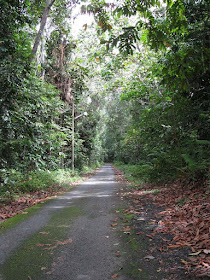






















































































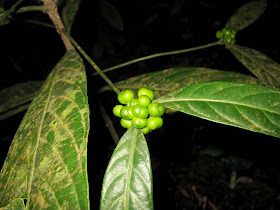












































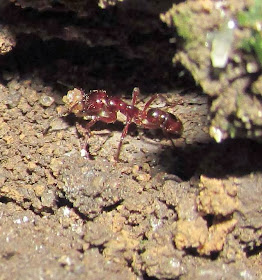






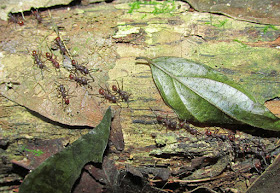









































































































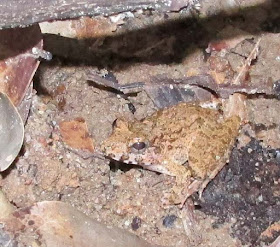












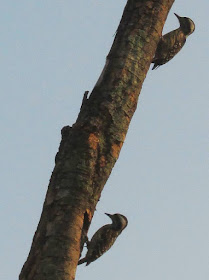


































No comments:
Post a Comment
Sorry Guys, Google Chrome or Blogger bugs prevent me from replying to comments again. It keeps telling me to sign in (even though I am always sign in) but when I click to sign in, it tells me "Unable to sign in check Google profile'. So sorry I can't reply to your comments.
Alternatively you can sent me an email if you are in need of answers.
Note: Only a member of this blog may post a comment.